-
Exploring the Myths and Facts About Solar
Solar energy is a renewable resource that can be used to power many of the electrical systems in your home. From solar lighting to solar panels on your roof, you will have many options when you plan a solar installation. If you are interested in reducing your energy costs, you may be wondering whether solar electric is the right choice for you. A company specializing in solar panels in Ocala can answer all of your questions about the many benefits of making the switch to solar. To help you get started on your installation, here is a look at some of the myths and facts about solar energy.
Myth: Solar Energy Does Not Help the Environment

Some consumers wonder about the environmental benefits of making the switch to solar. In fact, solar energy is a green and renewable energy source that has a positive impact on the planet. When you install solar panels in your home, you will be making an eco-smart choice for your home energy needs.Myth: Solar Energy Cannot Be Used Year Round
When you install solar panels in your home , you may be wondering whether your solar system will be able to power your home throughout the year. In fact, solar energy can be used throughout the years and seasons. The sensitive solar cells in a solar panel are able to pick up the energy from the sun, even when it is cloudy outside.Myth: Solar Energy Is Expensive
Another common myth about solar energy is that this type of energy source is as expensive as conventional energy. In fact, you may be able to save money when you convert your home to solar power. After you install solar panels, your system will work continually to create its own energy. As a result, you will find that your energy costs drop significantly. -
How Solar Cells Work
Solar energy is an essential part of everyday life in the modern world. Every year, solar power in the villages and the rest of the North Central Florida community becomes more pervasive, as more homeowners decide to make the investment in a green-friendly future. If you’re like most people, however, you probably aren’t entirely sure how solar energy systems transform the warm rays of the sun into usable energy. Here is a quick look at the basics of how solar cells work.
What is a solar cell?
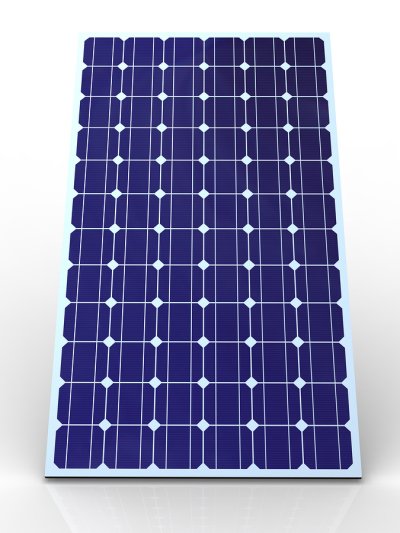
Every solar panel is made up of many individual solar cells, also known as photovoltaic cells. Each of these cells is about the size of your fist. Solar cells capture sunlight, then convert it into electrical energy. The more solar cells a solar panel has, the more powerful it will be.What are solar cells made of?
Solar cells are made of silicon. Silicon is a popular semiconductor material, which means that it can be used to conduct electricity. Each cell is made up of two thin silicon layers, one of which has a positive electrical charge and the other of which has a negative electrical charge. The cell is covered with an anti-reflective coating that helps it absorb, rather than deflect, the sun’s rays.What happens when light hits a solar cell?
While some people assume that solar power relies on the heat of sunlight, it is actually the light itself that creates the energy. When sunlight encounters a solar cell, the electrons in the cell are bombarded by the photons in the light. This causes the electrons to be knocked out of one silicon layer and into the other. As the electrons move around, it creates an electrical current. This current can then be harnessed by the solar panel and used as electricity in your household. -
Understanding How Solar Water Heaters Work
Solar energy can be used to power a variety of appliances throughout your home. From solar lights to solar pool heating, there are many ways that you can harness the power of the sun to meet your home’s energy needs. Solar water heaters are among the appliances that you may want to consider when you are making the switch to solar. With solar water heating , you can reduce your monthly energy bills while also improving the environmental impact of your home. A company specializing in solar panels in Ocala can help you install the right solar water heater for your household. Read on to learn more about how solar water heaters work.
Collection
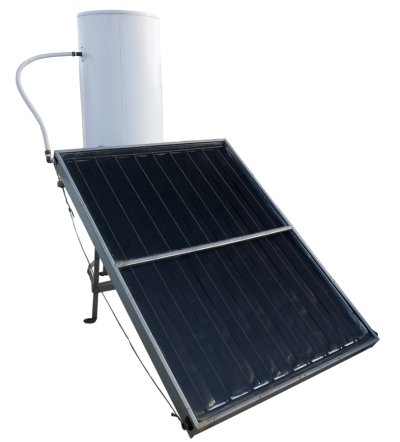
Water collection is one of the primary principles at work in a solar water heater . When you install a solar water heater in your home, a collection system will be placed on your roof. Solar water heaters are available with a variety of collection systems, including batch collectors, flat-plate collectors, and evacuated tube collectors. Once cool water enters the collector, it is heated with insulated tubes. These tubes harness the energy of the sun, and transfer this energy into your home’s water supply. A single collector will create enough water for the daily needs of your household.Circulation
Circulation is another key principle behind a solar water heater. Once the collector heats the water, it is then circulated to a tank, where it is stored for your daily use. There are several types of circulation systems, including direct systems, indirect systems, and active systems. Homeowners who live in colder climates will need to choose circulation systems that offer protection against freezing temperatures. With freeze protection, your circulation system will prevent the water from cooling down as it travels from the collection area to the storage tank. Your solar water heater installation professional will help you determine the best system for your home. -
What You Should Know About Attic Fans
As every North Central Florida homeowner knows, venting your attic is a must for ensuring that your roof stays strong and that your HVAC system continues to function properly. If you’re considering adding a solar attic fan to your Clermont attic, there are a few things you should know about how this simple and highly effective system can benefit you.
Solar attic fans are non-disruptive.
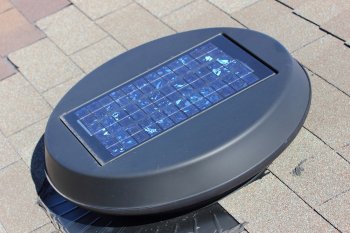
If you’re concerned about the cost of ventilating your attic, a solar attic fan is the perfect solution. Solar attic fans take up very little space, and they don’t make any noise. You won’t need to connect your attic fan to an electrical outlet, and it requires little to no maintenance.Solar attic fans can save you money.
Attics can get extremely hot, particularly in the summer. Cooling your attic with a solar fan will help to keep your entire house cool, which will help you rein in your monthly energy expenses. A solar fan also costs nothing to operate, since it runs on the free energy provided by the Florida sun.Solar attic fans can eliminate potential repairs.
By keeping your roofing shingles and insulation from becoming overheated and damp, a solar attic fan can reduce your need to make repairs in your attic. Since solar attic fans prevent your attic from getting too warm, they can also protect you from mold and mildew buildup that can be caused by the moist Florida air.Solar attic fans are diverse.
Solar attic fans work well in a wide range of different spaces. Whether you want to cool your house, a garage or storage shed, a workshop, or even a barn, a solar attic fan can improve air circulation and keep the roof materials dry and sturdy. No matter what kind of attic space you need to ventilate, a solar attic fan can provide you with the service you are looking for. -
Understanding Your Solar Water Heater
Florida lives up to its nickname “the Sunshine State,” and many homeowners throughout North Central Florida take advantage of this by harnessing solar energy to light their homes, keep their pools warm, and heat water for their sinks and tubs. One of the best ways to harness the free, abundant energy of the sun is to install solar water heaters in Clermont or Hernando . These systems supplement your current gas or electric water heater with solar power. Read on to learn more about how they work.
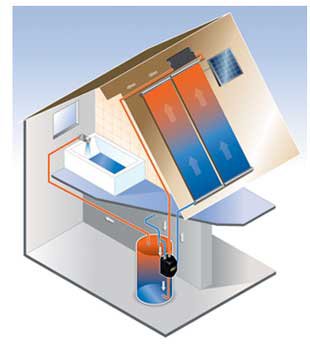 Water Heater Basics
Water Heater Basics
Most residential water heaters feature a reserve tank that holds dozens of gallons of hot water, ready for use at a moment’s notice, and solar hot water heaters are no exception. Roof-mounted collectors (similar to solar panels) absorb thermal energy from sunlight, and use this to heat the water before delivering it to the tank. This reduces energy consumption, since you are not burning gas or using electricity to heat the water—only free solar energy.Collector Designs
There are three basic designs for the energy collectors that form part of solar water heater systems. Passive collectors feature an insulated box containing large copper tubes which hold the water. They are equipped with tempering valves to keep water at a comfortable temperature when it comes out of the tap, since the water will continue to heat up in the tank. Flat plate collectors consist of an assembly of copper tubes and tempered glass. Indirect polymer collectors, which are the most energy-efficient type, feature a series of self-insulated tubes to provide maximum heat.Circulation Systems
Many solar water heaters use direct circulation, where the water itself passes through the collectors before being stored in the tank. In warm climates such as that of South Florida, this system is ideal. The best for North Central Florida are indirect systems, also called closed-loop systems, which feature a special heat transfer fluid that warms the water in the tank. The systems can either be passive, where natural convection pumps the water from the collectors to the tank, or forced-circulation, which use pumps, valves, and controllers. -
Saving Money with Solar Attic Fans
On long, hot summer days in North Central Florida, the sunlight shining on your roof can cause the temperature in your attic to climb into the triple digits. This can have several negative effects. Your air conditioner may have to work extra to keep the rest of the house cool, the things you store in the attic may be damaged, and the materials of your roof can warp and deform. Fortunately, there is an elegant solution: install a solar attic fan in Clermont. Here is how a solar attic fan can save you money:
Reducing Air Conditioning Costs
Warm air tends to rise, making the higher levels of your home warmer than the lower ones. However, if your attic is already very hot, the warm air in the rest of the house will have nowhere to go, so the temperature inside will rise. This will make your air conditioner work overtime, causing your utility bills to rise. But when you harness solar energy with an attic fan, the attic itself will stay cool, and the heat in the rest of your home can also rise and vent naturally, reducing the amount your air conditioner has to work and your bills along with it.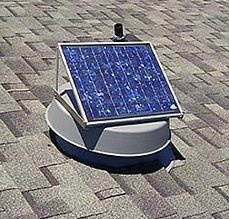 Preventing Roof Damage
Preventing Roof Damage
Most attics are unfinished, which means that the inside layer of the roof is bare and exposed. If the attic is unvented, during the summer warm air can condense on the inside of the roof and damage the wood. Also, warm air in the attic can cause the roofing materials to buckle, which can in turn lead to loose shingles and leaks. Solar attic fans vent warm air outside so that the attic doesn’t heat up, even in the middle of summer.Keeping Your Keepsakes Safe
A solar attic fan also helps to regulate the temperature inside your attic so that any items you store there won’t be damaged. Old clothing and family photographs, which are among the mementoes that homeowners often store in their attics, are particularly sensitive to temperature fluctuations. The fan pays for itself in a very short time since it runs on free solar energy . -
A Look at the Tax Benefits of Going Solar
 Many residents of North Central Florida are already aware of the energy-saving and environmental benefits of installing solar panels near Clermont. Since solar energy is free and renewable, you reduce your utility bills and your carbon footprint when you harness it to heat your water and light your home. But did you know that you can also receive tax credits for installing solar panels and other solar equipment?
Many residents of North Central Florida are already aware of the energy-saving and environmental benefits of installing solar panels near Clermont. Since solar energy is free and renewable, you reduce your utility bills and your carbon footprint when you harness it to heat your water and light your home. But did you know that you can also receive tax credits for installing solar panels and other solar equipment?When you install a solar electric system or solar water heater, you can receive a tax credit of 30%. Solar attic fans are also eligible for tax credits of 30%. Installing a solar tubular skylight can get you a tax credit of 10%. You will need to fill out IRS form 5695 and fill it with your federal taxes in order to receive the credit. Visit EnergyStar.gov for more information about the process of saving money on your taxes with solar power.
-
What Are the Key Features of Solar Tubular Lights?
In North Central Florida, the sun shines year-round, providing free solar energy and lighting. That’s why many homeowners choose to install solar tube lighting in the Villages. Solar tubular skylights provide softer illumination than traditional skylights, and they are much less obtrusive.
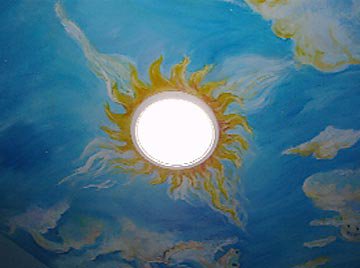 The slim, barely visible units will not affect your home’s curb appeal because they blend in almost invisibly with the roof line. They are watertight, and designed to release any condensation that may naturally occur with temperature and humidity fluctuations. The unique system of reflecting mirrors inside the solar tubes delivers soft, UV-free lighting that won’t fade your furniture or your rugs. Installation does not require any structure changes to your home or your roof, and you can select an option light kit, vent kit, or dimmer kit to customize your solar tube lighting. No matter what style of roof you have, there is a solar tube light designed for your home. Discover what thousands of other homeowners in Clermont have and install one in your home today.
The slim, barely visible units will not affect your home’s curb appeal because they blend in almost invisibly with the roof line. They are watertight, and designed to release any condensation that may naturally occur with temperature and humidity fluctuations. The unique system of reflecting mirrors inside the solar tubes delivers soft, UV-free lighting that won’t fade your furniture or your rugs. Installation does not require any structure changes to your home or your roof, and you can select an option light kit, vent kit, or dimmer kit to customize your solar tube lighting. No matter what style of roof you have, there is a solar tube light designed for your home. Discover what thousands of other homeowners in Clermont have and install one in your home today. -
What Are Your Solar Water Heater Options
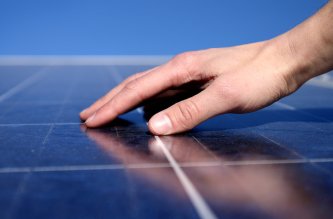 Solar power is one of the most abundant resources in Florida, and installing a solar water heater near Clermont is one of the most effective ways to take advantage of it. Solar water heaters will save you money on your energy bills, and provide you with plenty of hot water for all your needs.
Solar power is one of the most abundant resources in Florida, and installing a solar water heater near Clermont is one of the most effective ways to take advantage of it. Solar water heaters will save you money on your energy bills, and provide you with plenty of hot water for all your needs.Solar water heating is very simple in principle: the sun’s rays strike a collector, and the water is heated either directly by the solar energy or by means of a heat transfer fluid. Solar water heaters work in tandem with your current water heating system. If you have a gas water heater, you will need to install a second tank to take advantage of the solar system. If you currently use an electric water heater, you can install optional photovoltaic (PV) solar panels to provide electricity so that you can have hot water even in the event of a power outage.
-
Comparing Gas and Solar Pool Heaters
 Although Florida’s weather is famously warm all year long, you still need a pool heater if you want to go for a swim in comfortable water most of the year. Generally, without a heater the temperature of the water will not be higher than the nighttime low. Many people use solar pool heating systems in Clermont because solar energy is inexpensive and safer to use than gas.
Although Florida’s weather is famously warm all year long, you still need a pool heater if you want to go for a swim in comfortable water most of the year. Generally, without a heater the temperature of the water will not be higher than the nighttime low. Many people use solar pool heating systems in Clermont because solar energy is inexpensive and safer to use than gas.Compared to gas heaters, solar pool heating has a low monthly cost—after installation, it is completely cost-free. Solar pool heating systems also allow you to cool the pool down in the middle of summer if the water is too hot. Also, going solar is a much more environmentally friendly option. The gas that other pool heaters run on needs to be extracted from the earth and pumped to your home via municipal gas lines. Solar pool heating panels, which are installed on your roof, are unobtrusive and when properly cared for can last for decades.
RECENT POSTS
categories
- Uncategorized
- Solar
- Pool Heating
- Solar Pool Heaters
- Solar Panel
- Solar Attic Fans
- Solar Tubular Sky Lights
- About Us
- Infographic
- Solar Cells
- Solar Water Heater
- Tax Benefits
- Solar Powered Lights
- Solar Tubes
- Solar Power
- Solar Company
- Hot Water System
- Sun Bandit
- Solar Energy System
- Solar Electric Power
- Skylight Installation
- PV Systems
- Solar Pool
- Solar Attic Fan
- Solar Fan
